In August 2016 Pamela Curr, from ASRC, and Sr Brigid Arthur, from the Brigidine Asylum Seekers Project, travelled to Christmas Island to visit the men seeking asylum, who are currently held in the detention centre, more than 2600 kilometres from the nearest capital city, Perth.
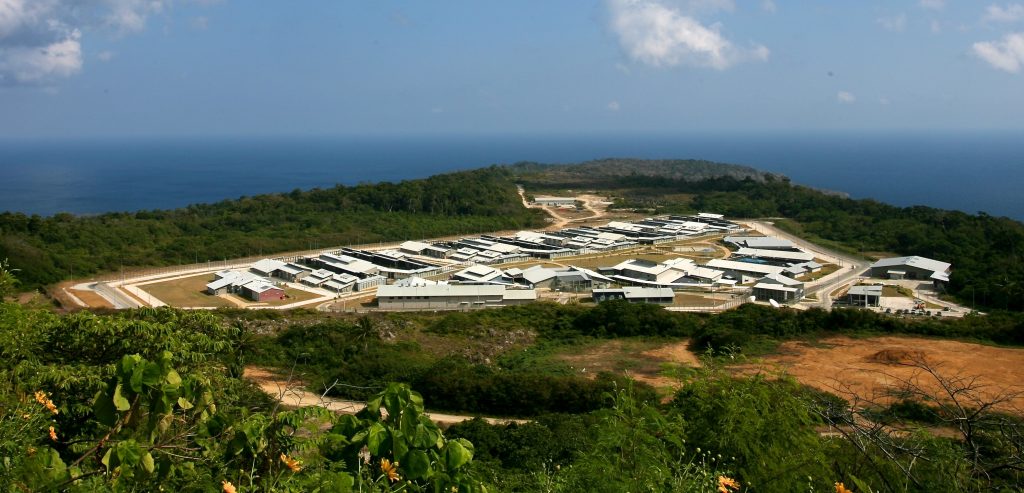
Introduction
On Christmas Island, Pamela Curr and Sr Brigid Arthur found an environment of fear and physical violence where men seeking asylum face ongoing mental trauma and isolation, all while under the direct care of the Australian Government.
The Christmas Island detention centre holds around 30 men seeking asylum mixed in with about 200 men exiting prisons from across Australia after serving sentences of varying length for crimes of varying severity. This places the men seeking asylum at significant risk of harm due to the simmering resentment of some of the ex-prisoner population.
The effects of the extreme isolation, fear of violence, uncertain future, and lack of adequate mental health care has had a deeply dehumanising effect on these men.
The detention centre on Christmas Island is run as a high security military camp where control is based on fear and punishment and the extensive internal use of extrajudicial punishment by force and isolation is evident.
This report on their visit provides an insight into the militarisation of our immigration detention system and the ongoing abuse of people in our government’s care.
Process- Getting in
We had pre-arranged booked visits to 14 men, some known to us and some who requested a visit when they heard from friends that we were coming. We were required to list the men’s names and times, allocating one hour per person. We were refused group visits. Our list was confined to men seeking asylum but we did see two men who were 501 ex-prisoners. One by accident- Serco got the Vietnamese name wrong and brought in the wrong man and another who asked the Welfare officer to put his name forward. In all we saw 26 men as others heard of us and asked to be visited.
Upon arrival at the reception area we were banded, wanded and registered after photo ID was produced as is common practice under Serco/Border Force rules. We were escorted at all times. We passed through seven locked gates and doors to get to the designated visits area.
On the first day we were allowed to take in a list of the men we were to see but no pads or pens. On subsequent days we were not allowed to take anything in with us. It was clear that visitors were a rare occurrence. The rules changed daily. We were allowed to take in unopened packets of processed food, dates, nuts, muesli bars etc. but the men were only allowed to consume these while in the visitors room.
Security
Entrance to every area required an officer to press buttons to alert the unseen central controllers to open the heavy metal doors. There were double airlocks to every area which required the door behind to close and lock before the door in front will open. From a previous visit, one of us had seen the security room hidden above reception where two officers sit around the clock, screening and opening doors upon request from a buzzer.
We were told that there were hundreds of heavy metal doors throughout the North West Point Immigration Detention Centre (NWPIDC). When the Gates open to allow in vans and cars, an alarm rings out across the camp until the gates close.
The visits room, unlike all the other areas through which we passed, had no fans or air conditioning.
An officer sat in there with us. Behind a glass wall three more officers sat behind computers. They also watched us. The men were escorted in to see us one by one. They were curious on the first visit as to who we were and why we came. On the second visit they were more open. They all thanked us for coming. One man said that he had not seen a visitor in two years, another said he had been in NWPIDC for 17 months and had never seen a visitor.
>We were told that the only people other than staff who come there are an Imam and a Catholic couple who have an arranged service on Sundays when they are on the island.
Current Population of Men detained at NWPIDC
There are two groups of men detained in this high-security camp.
The men seeking asylum or men who have had visas cancelled have many different cases and backgrounds. Their number is estimated to be between 25 to30.
The second group is made up of men exiting prison after sentences of varying length following crimes of varying severity. This group is referred to as the (501’s) and is estimated to be around 250.
All the men we spoke to said that conditions changed after the death of Fazal Chegani Nejad in October 2015. There were protests following the death of Fazal which reportedly resulted in major damage. Considering that the main building material is metal and iron with no soft furnishings it is hard to imagine how extensive this damage could be. However a third external fence with rolled top, cameras and sensors has been installed to encircle the other fences.
The reason for the transfer of men seeking asylum to NWPIDC is unclear because of the diversity of their cases. For instance while some men have been refused after going through the refugee determination process, others are just beginning.
The stories of the various ways the men came to be on Christmas Island are illuminating:
- One man arrived in Australia by air 18 days before being sent to NWPIDC and before being able to see a lawyer and file an application.
- Another man was a ‘failed return’. DIBP were unable to get permission from his country to send him back around ten months back. He had no criminal record and it was unclear on what grounds he continued to be detained.
- Another man had been flown back to his country but they refused an entry visa to the Serco Guards accompanying him and returned them all to Australia.
- A few men were stateless and had no country to return to.
- Another man had arrived as an unaccompanied child and was redetained when he turned 18 years.
- A number of men had been released from detention on Bridging visas with no work rights or access to income.
- Two men have been detained on CI since they arrived, one left for ten days only to go to hospital.
- They spoke of another man who spent five years on CI but who was recently released after being viciously bashed by fifteen “501” men. After he was hospitalised he was transferred to the mainland and then released.
- Another young man was clearly intellectually disabled. He could not maintain a coherent thought pattern. He said that he had been punished in White 1 thirteen times. He clearly had no insight or ability to be compliant in order to avoid White 1.
- Another man thought that he was taken by mistake as a man of the same first name had been threatened with CI but not taken.
- Some men had left behind wives, girlfriends and children and other family members in the cities in which they were detained.
Most of the men described the constant fear of being attacked by “501’s”. They said that not all 501’s were frightening but that they stuck together. We were told of the seeming immunity of 501’s to punishment from SERCO. The men seeking asylum said that the 501’s called them “boaties” and blamed them for their transfer to Christmas Island. The men also told us that the 501’s broke things and assaulted people in order to get back to the mainland even if prison, where they could see their families. The ex-prisoners said that prison life was preferable to Christmas Island.
One man described a situation which occurred the previous day in the computer area. He was just finishing his half hour when the man sitting next to him was surrounded by 5 men who proceeded to punch and kick him. The man we spoke to turned quickly to the Guard on watch who was sitting behind them, in time to see the guard close his eyes and turn away. The man said this happens all the time. The guards do not challenge the 501s.
A worker at the facility told us that there were men with intellectual disability, acquired brain injuries and very mentally disturbed men in the camp. They were never sent to the mainland for treatment. The men are medicated heavily. Tablets are given on a rotation timetable as men from each compound are taken separately to the medical window and tablets are put in a metal tray and given via the glass ‘no touch’ counter.
Structure of North West Point Immigration Detention Centre (NWPIDC)
There are 9 compounds which include two isolation, punishment areas and one protection area.
NOTE in the week after we left a new “privileges” compound (Gold 2) was opened. Here the men chosen to go there, have their own room, access to a PlayStation and are allowed into the Green Heart for 4 hours per day. So far only 3 men seeking asylum and 14 men from the prison system have graduated to this place.
Gold 1 and 2, Blue 1 and 2, Green 1 and 2 and White 2 and Red 1
Red 1 is now called “Support”. Men are taken there on arrival in some cases and when they are mentally unwell or have not been compliant. Sometimes for 24 to 48 hours they are held in locked, metal-doored rooms with no stimuli or distractions such as books, TV or radio.
White 1 is the isolation area. The punishment regime is graded into 3 stages:
- “A” is total isolation with no reading matter, TV, or music. One man told how they took his clothes away and turned up the air-conditioning to very cold. They stay in A for one or two weeks before graduating to “B”.
- “B” is where they can have a TV in their isolation cell. If their behaviour is considered compliant, after one or two weeks they graduate to “C” block.
- “C” is where men are allowed to go out into the Green Heart during the day for an hour before returning to their cell.
Gold 2 was for protection. Currently there are around 250 men who have exited the prison system and who are awaiting deportation or release to the community. They are referred to as “501’s” as this is the visa status they hold. Some have committed crimes which put them at risk from other “501’s” so they are placed in Gold 2 for protection. Asylum seekers are also at risk from 501’s at times and they are placed there for protection.
It is unclear if the protection area still exists as Gold 2 is now designated as a “privileges” area.
Currently in the population mix are 25 to 30 men seeking asylum or who have been re- detained for a number of reasons. The asylum seekers are distributed through the compounds in small numbers. This means that two to four asylum seekers will find themselves in a compound with forty to fifty 501’s. They asked why they could not be separated as they were scared. Men complained that that they had things stolen from them and complaints to SERCO yielded no result. These men seeking asylum said that SERCO ignored the behaviour of the 501 group.
More than half of the people seeking asylum had spent time in White 1 punishment block.
The men described a request to go to someone’s room as a possible situation where they could be bashed or raped because there are no cameras in the rooms.
One man spent 5 months in isolation. He was in a refugee camp as a child and now has been sent to eight different camps in Australia. Many men had been to multiple camps across the country.
Comments from men are documented below
- One man said that he had seen no visitor for two years.
- The men were courteous and distressingly grateful.
- Some men were shaking and clearly unwell. Others were cowed and scared, speaking in a low voice so as not to be heard by Serco staff.
- The men we spoke to all asked – please get me out of here (NWPIDC) and take me to the mainland – anywhere but here.
- Men asked why am I here with criminals. They said that some 501’s boast about their crimes including “robbery and rape”.
- The 501s want to go back to the mainland, even prison to get out of Christmas Island. This is why they make trouble. The 501’s who rioted after Fazal died were not charged.
- We have to ask and say please every time we want a cup of coffee or a tea bag. They put coffee powder in a plastic cup. Sugar is rationed because they say we can make alcohol with it.
- We have no power over our lives. We stay in our room all day to keep out of trouble.
- If a guard comes to work angry we must stay away.
- If ERT don’t like you they take you to the toilets and bash you as there are no cameras in toilets.
- When Code Black is called they put you in a van to go to White 1. They put cameras in vans now so guards can’t bash you there like before.
- All areas are caged.
The area called the Green Heart is in the centre of the facility. It has sports fields and space. Each compound is allowed two hours per day separately in the Green Heart. The times start at 6.30am and rotate each day as no one gets up at 6.30am. Some of the men seeking asylum said that they were too scared to go out because they could be bashed. They explained that an invitation to a room could mean a bashing because there are no cameras in the rooms to record the assault.
Across the Green Heart from the compounds is the area called Education.
Management
The Camp is run by SERCO, under a contract from the Department of Immigration and Border Protection. Border Force staff in uniform as well as Australian Federal Police are highly visible. There is also Emergency Response Team (ERT) on duty. If there is an incident a CODE BLACK is called over the walkie talkies and ERT respond by running to the area and doing a “take down”.
The person perceived as a threat or involved in an “incident” is grabbed, arms are pushed up the back, thrown to ground, kneed in back, kneed on face and handcuffed from behind by several ERT personnel. ERT are chosen from SERCO staff. They are generally big and fit. Their uniform is different with a protective vest and multiple implements hanging from their hips. They wear GO PRO cameras. They noticeably did not smile or make eye contact as we passed through doors together or passed each other on paths. We are told that ERT earn $20 extra per hour during a Code Black. It is estimated that there are two Code Blacks per week.
The most junior SERCO staff earn $110,000-120,000 per annum. They have subsidised accommodation and free travel to work and meals are provided at $4.00 per meal. They work 12 hour days, 6 days per week. Many are on 12 month contracts. Some older men explained that they came from states where jobs were scarce or only low paid work available.
In addition to security staff there are medical and counselling staff working for IHMS on contract to the government. Most staff seem to be flyin/flyout. The island is very expensive for food but cheap for cigarettes and alcohol. For example a packet of cigarettes cost $2.75 but a tired lettuce costs $14.00.
Major areas of concern of the men we saw
- No knowledge as to when or if they will be released
- Do not understand why they were sent to Christmas Island – all consider it a punishment
- Fear of violence from 501’s and also staff particularly ERT
- Locked in to Compounds all day except for 2 hours in the Green Heart
- Fear of being taken to White 1 or Support
- Nothing to do but worry
- No access to lawyers
- Fear of being charged by police
- Missing family friends
- “Going Crazy” – “I don’t feel any more”
- Losing my life in this place.
- “We must ask for everything – always say please or there is trouble – ask for teabag or coffee powder in cup one by one.”
- “We are not criminals.”
Major areas of concern from our visitor perspective.
NWPIDC is run as a high-security military camp where control is based on fear and punishment. Extensive internal use of extrajudicial punishment by force and isolation is evident. Little concern as to the mental and physical health of the men was shown. Concern was expressed by staff about the mental health status of some of the men. Acquired brain injuries, intellectual disability, psychosis and extreme mental ill health were quoted as health conditions of some of the men.
We witnessed techniques of control which are now seeping into the onshore camps. Christmas Island is like a prototype of a model of extreme surveillance and oppression.
Placement on Christmas Island seems arbitrary and may be indeed being used as a tactic to instil fear and therefore control in onshore centres. Fear of being taken out in the night and sent to Christmas Island is spreading through the onshore camps.
Most of all there is no monitoring or independent scrutiny of this isolated camp. Since we left more information has come to light that creates even greater concern for the physical and mental survival of the men sent there.
Brigid Arthur CSM
Brigidine Asylum Seeker Project

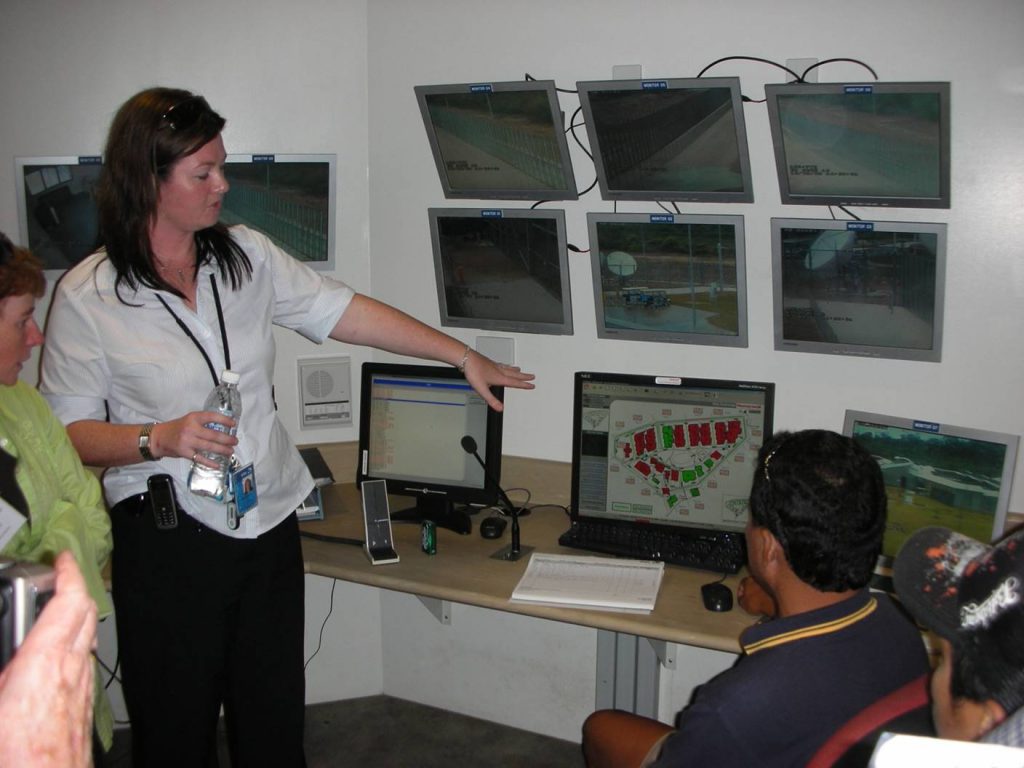
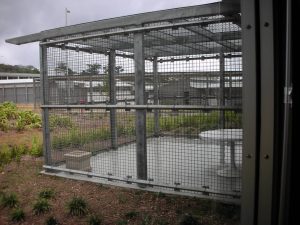
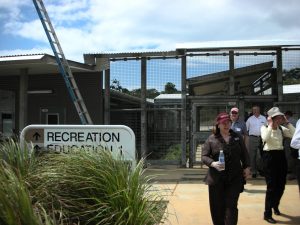
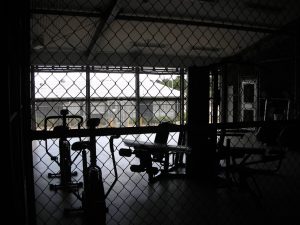

Connect with us
Need help from the ASRC? Call 03 9326 6066 or visit us: Mon-Tue-Thur-Fri 10am -4pm. Closed on Wednesdays.